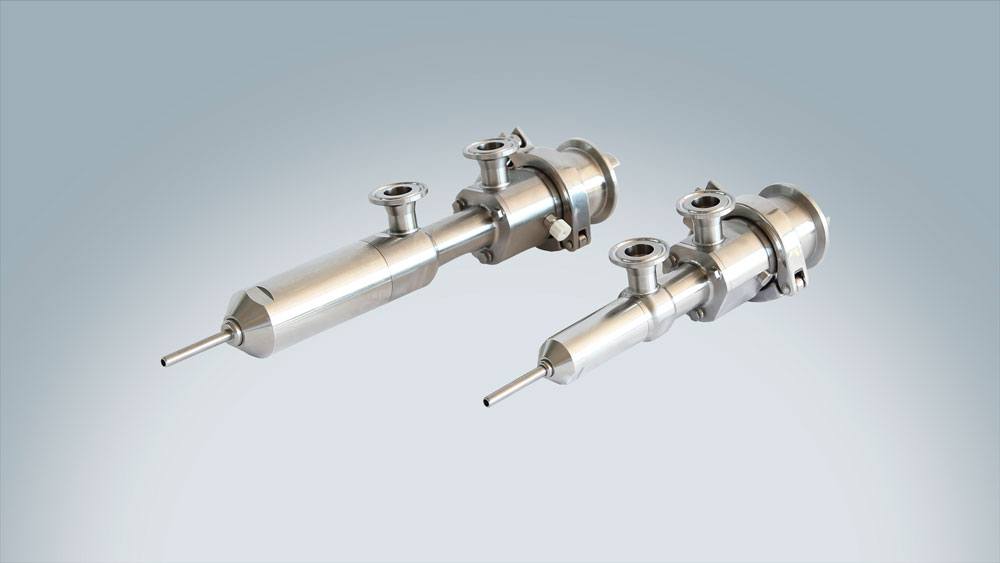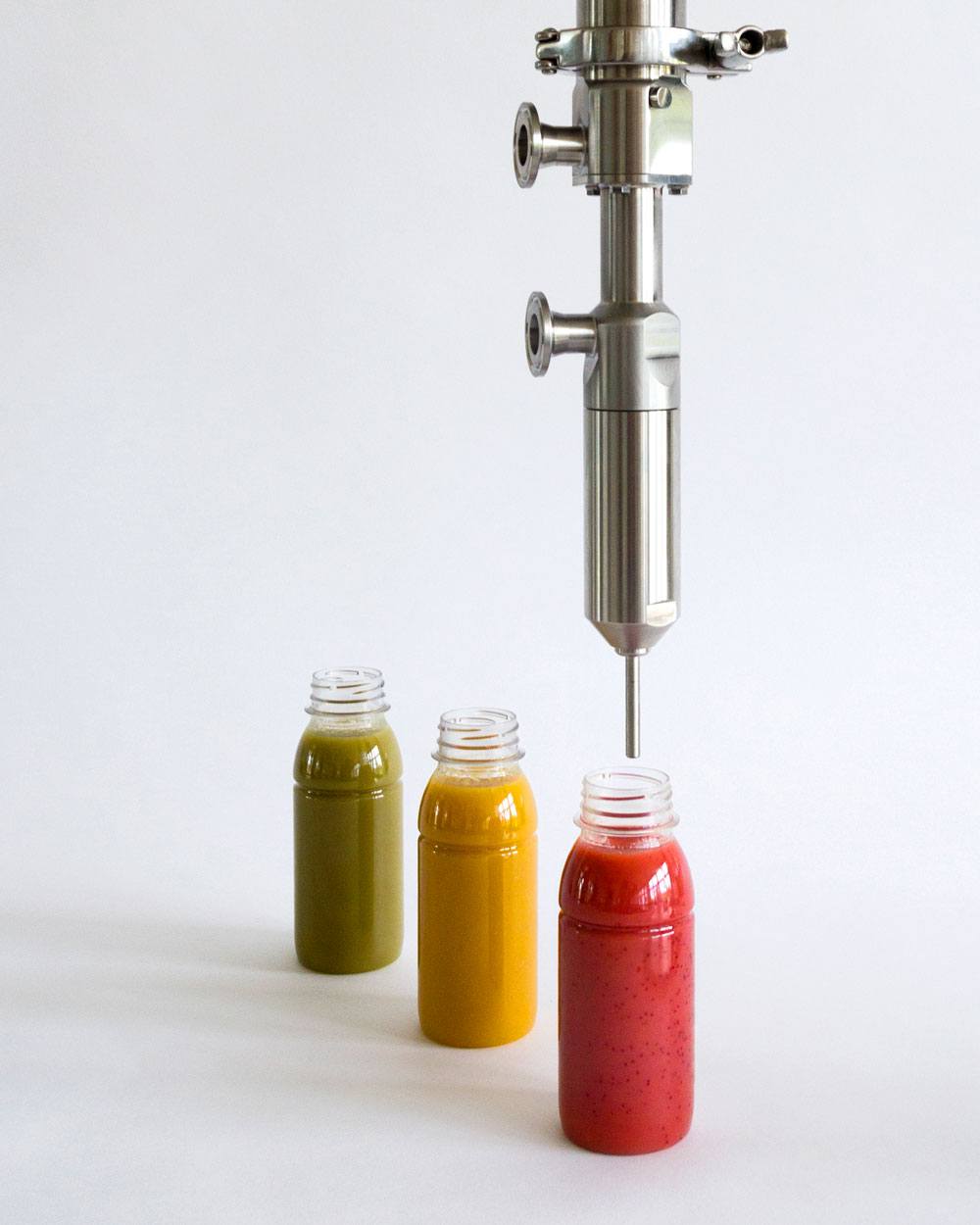Personalized food as part of our lifestyle
New ways of producing food
“Digitization” and “networking” are everywhere. New technologies play an important role in this and are also revolutionizing nutrition and fitness. Smart fitness devices, such as smart watches that track health data such as mileage, number of steps, heart rate or blood pressure, have greatly infiltrated our society. Data is collected via an app on a smartphone and offers the user individual fitness or health recommendations. Such personalized recommendations give every user the opportunity to go his own way in terms of health.
Food production is also affected by our health-conscious way of life, as part of the personal lifestyle, because eating habits are closely related to the fitness hype. It is not without reason that even fast-food chains change their offers and add, for example, super foods to their ranges. Gone are the days when discounters almost exclusively offered mass-produced food. The food choices have been, and are being, supplemented by numerous individual and healthy foods.
Trend towards personalized foods
A trend that is increasing in popularity is personalized food. In this sector, new technologies are opening up completely new possibilities. In the future, for example, tracking systems will increasingly be used to allow us to understand the exact journey of our food: from the farmer’s field to the consumer’s plate.
The focus of nutrition in the future will be on these personalized foods. Consumer behaviour will change radically, i.e. consumers will want to buy specially tailored foods that are adapted to their needs and preferences. Here, the combination of the respective preferences, tastes and the substances necessary for the body (for example, the exclusion of allergens) forms the basis for the perfect individual food. Apps and health data will help to “design” personalized foods.
In the future, there will be no boundary between treating illnesses with medication and eating habits. By adding active ingredients (e.g., vitamins or minerals), the medication can already be taken by ingesting food, or by making preventative dietary adjustments, “disease-makers” can already be removed from food, e.g. certain fats, sugars or cholesterol.
Food filling: Batch Size 1
The biggest challenge that the industry needs to address is the conversion and adaptation of food production and related processes. In the future, manufacturers will need to be able to produce batch size 1 food whilst still being competitive. The challenge is based on achieving the combination of characteristics of the “manufactured creation” and mass production at the same time. Extreme flexibility and intelligent systems and machines are needed. Linked to this, the degree of automation and the use of robotic systems in the food industry will increase significantly. Smart software and networking can meet this challenge. Systems and concepts that are already being used in other, fully automated industries will also be used in food production. Intelligent hardware and software makes it possible to start the production of a certain food with basic raw materials for a relatively long time. The individual touch is added in one of the last production steps, as required, in the form of flavors or colors.

The plants must be designed and networked in such a way that basic systems, e.g. a mixer with highly flexible modules, such as packaging, work without problems. To ensure the flexibility of the production, the complexity of longer changeover or cleaning times must be avoided.
In the field of filling and dosing technology, the principle of the progressive cavity pump is used in a completely new field of application. The advantages of this technology are of benefit to the food producers and therefore enable highly flexible and individual production with a theoretical batch size 1.
ViscoTec offers perfect solutions with its DLG (German Agricultural Society) awarded Hygienic Dispensers and the barrel emptying systems. This ensures a high-precision and clean filling directly in the dispensers. Due to the miniature progressive cavity pump technology, the dosing quantity can be variably changed. A servo drive controls the Hygienic Dispenser and the output quantity is modified by merely changing the speed. This flexibility and precision is used, for example, in filling machines in which individual additives and flavorings (for example vitamin C and strawberry flavor) are only added at the end of the filling process. This allows the production batches to be individually controlled as required.
Product and material changes are also very easy to control with the ViscoTec Hygienic Dispensers. Thanks to their hygienic design, the dispensers can either be disassembled and cleaned in just a few minutes without tools, or alternatively they can be completely sterilized inline through the CIP / SIP sequence. The changeover times are accordingly low, and time and expense are saved whilst profiting from a more flexible production. The ViscoTec drum emptying system complements and completes the material and product supply. The feeding systems can feed the material of the filling station into the Hygienic Dispensers, even in small batches, and offer a perfect symbiosis for a modular and flexible filling and dosing station. In combination with robotics, this technology can provide a perfect foundation for future food production. Robotics applications, which until now have only been implemented in the high-tech areas of electronics or automobile manufacturing, will soon find their place, for example in large-scale bakeries or in the beverage and dairy industries. An example of this is the individual design of baked goods or biscuits with personal logos or decorative motifs. To do this, the ViscoTec Hygienic Dispensers are mounted on robot stations. Individual labels or embellishments, which are ordered in advance by customers via online shops, can then be implemented immediately and produced as personalized food.
To summarize, the trend of personalized food is already in full swing. Current lifestyle trends and future trends are based on healthy and personalized food. Very soon, the influence of this trend will become even more apparent in the tangible transformation of food production.

